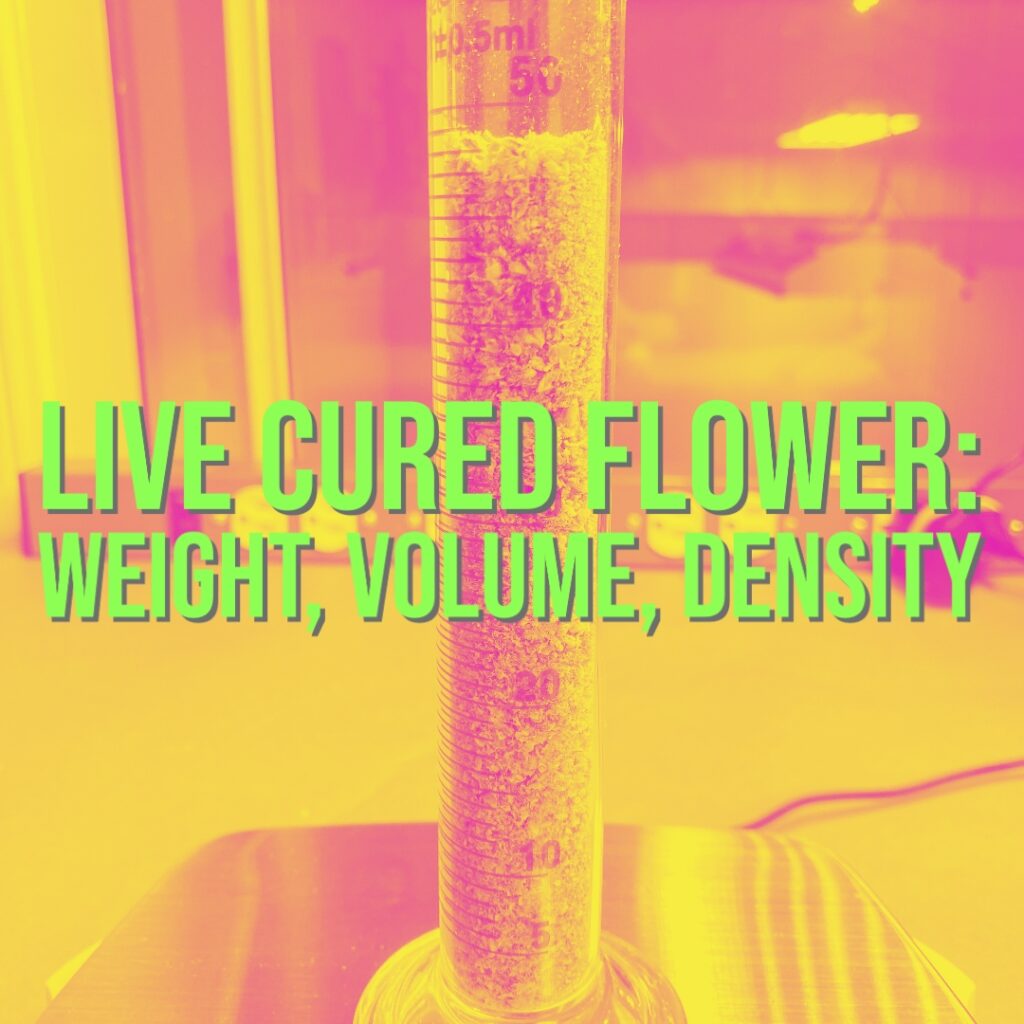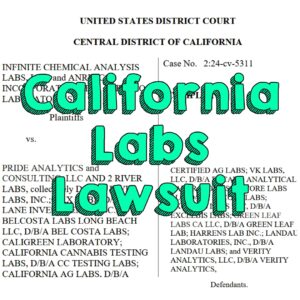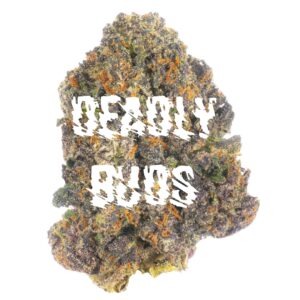Our Live Cured Flower is less dense than traditionally cured flower because of our propriety dry/cure method. This means you have more to twist and pack out of each eighth! Sometimes it’s hard to explain, so I want to show you an experiment we did so that I can display the densities of cannabis flower that are processed in these two different ways. Keep in mind that math isn’t my specialty, so I had to rely on my business partner Will Sun to help explain a couple things.
Let’s start by defining what weight, volume, and density are:
Weight: Weight is a physical property that quantifies the force exerted on an object due to gravity. Basically, you can measure this with a scale (I skipped math class but sold a lot of cannabis). Weight is commonly measured in units such as kilograms (kg) or pounds (lb) or grams (g). In our demonstration today we’ll be working in grams.
Volume: In simple terms, volume measures how much space something takes up. So, we’ll see how much space each type of cannabis takes up. When we explain this below it will be in milliliters (ml).
Density: Density describes the amount of mass per unit volume of our samples. In short, It’s a measure of how compact or concentrated the material is. It is calculated by dividing the mass or weight of a sample by its volume. The density of cannabis flowers varies depending on factors such as cultivar, cultivation practices, environmental conditions, and post-harvest processing. Taking multiple measurements and averaging the results can provide a more accurate representation of the density if you have enough to sample. We ran the experiment a couple times so that we had more than one data point.
Now let’s prove that Live Cured Flower is less dense than traditionally cured flower!
To measure the density of the cannabis flowers, we took these steps:

- Obtain a representative sample: We selected representative samples of both Live Cured Flower and traditionally cured flower that we wanted to measure the density of. We picked 3.5 grams of cannabis to ensure that the sample was consistent, and large enough to provide accurate results. We sampled a packaged eighth of traditionally cured flower that we purchased at a licensed retailer, and a packaged eighth of our Live Cured Flower.
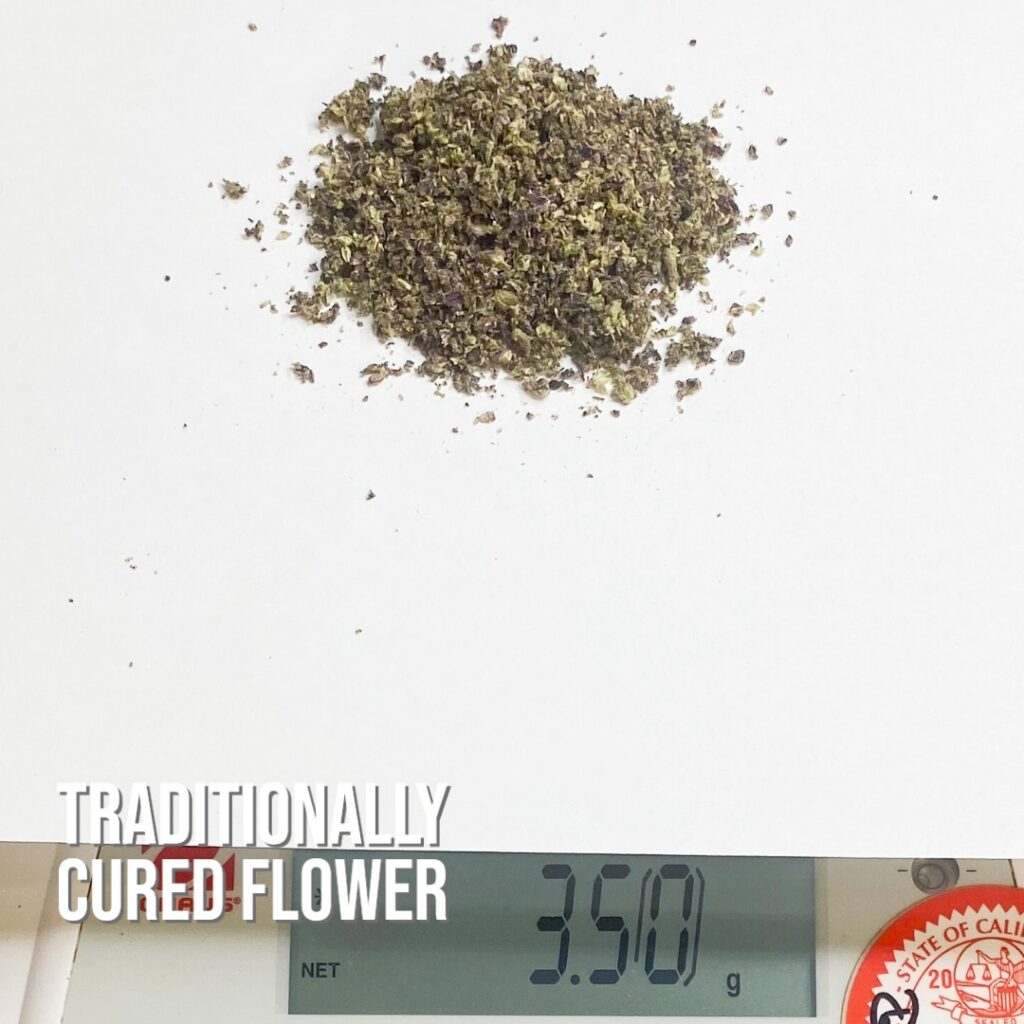
- Weigh the sample: We ground the flower to a uniform consistency, used a precise scale to measure the mass of the sample, and then recorded the weight in grams (g). Each sample we used was exactly 3.5 grams.
- Measure the volume: There are a few methods you can use to measure the volume of the sample, but this is how we did it:
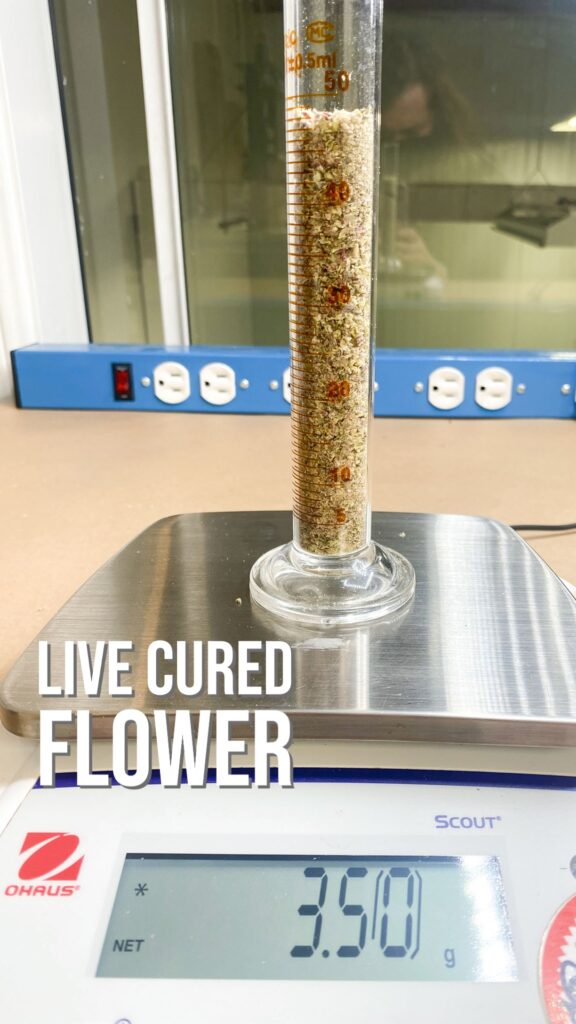
- We took an approach which consisted of us taking the ground flower and filling graduated cylinders with the cannabis.
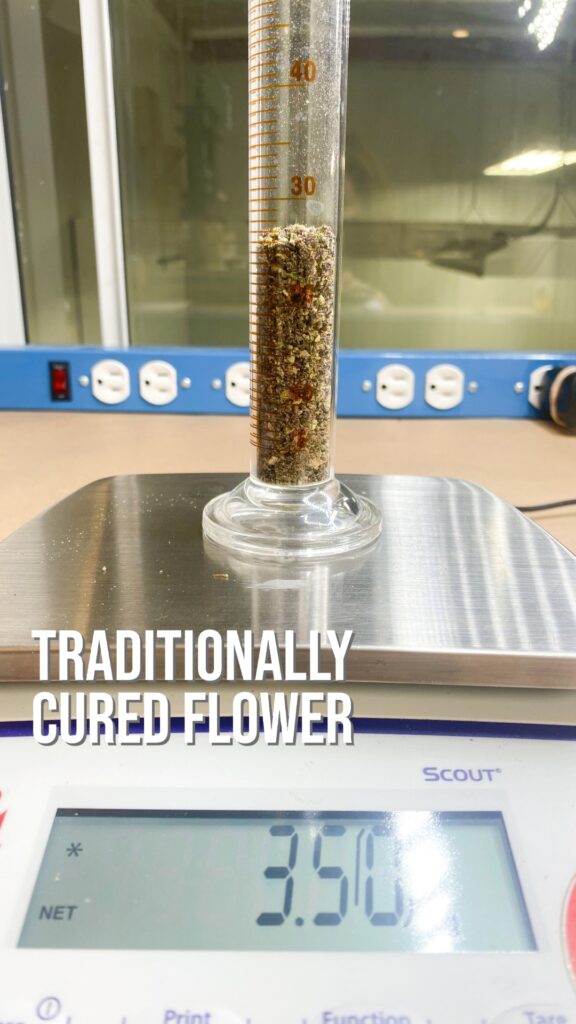
2. We didn’t tamp down the ground flower and compact the material. We just let it settle in the cylinder by tapping it a couple of times on the table.
3. Then we measured the volume on the side of the cylinder and recorded it in milliliters. There was 49ml of Live Cure Flower and 27ml of traditionally cured flower.
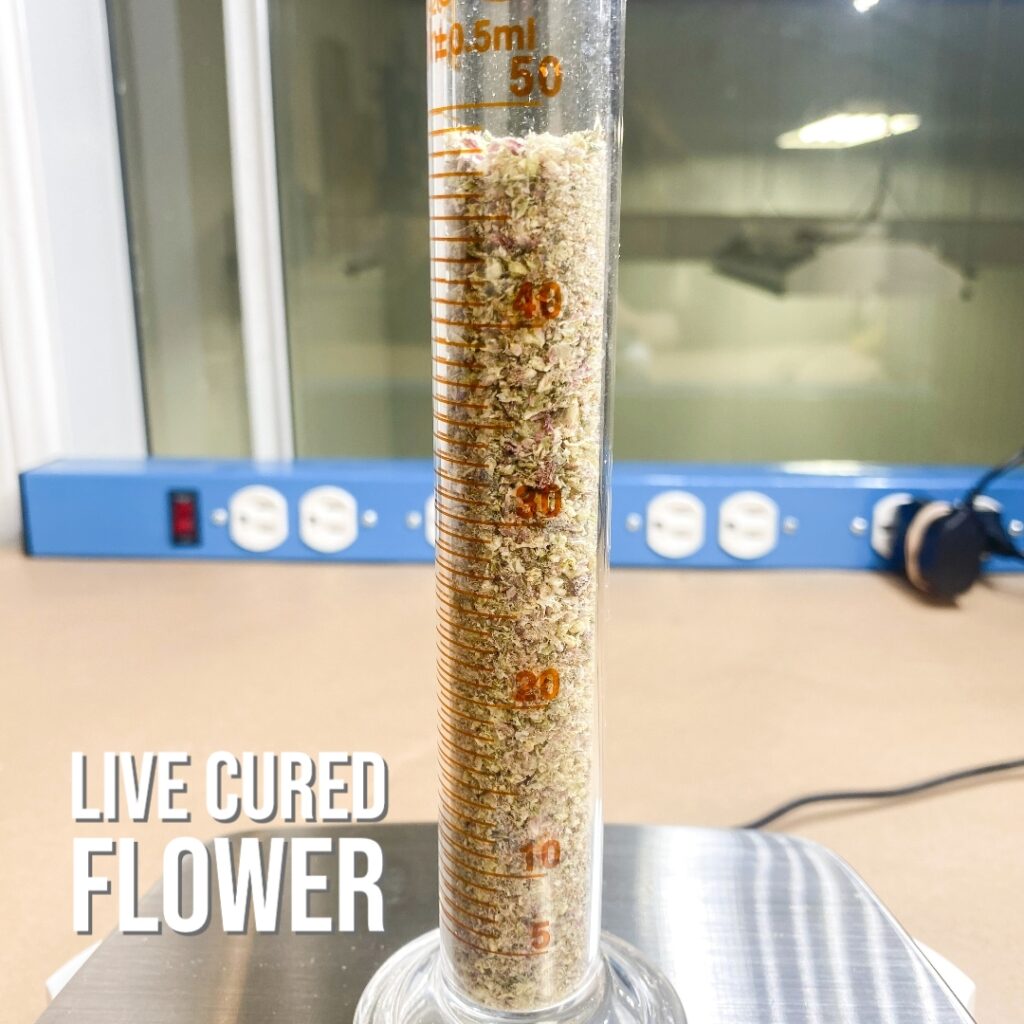

- Calculate density: We divided the mass of weight of the sample (step 2) by its volume (step 3). The result was the density of the cannabis flowers. In this example, density is expressed in grams per milliliter (g/mL). The density of Live Cured Flower is 0.07g/ml and traditionally cured flower is 0.12g/ml. We used some math-magic to figure that out.
Now that we can demonstrate that our Live Cured Flower is less dense than traditionally cured flower, it’s important to note that you’re consuming a lower dose of THC per serving, so this means you can more precisely dial in each dose during your session without going over. This is because each bowl you pack or joint you roll will contain less cannabis. That’s great news because you also get more servings per eighth which equals more to smoke or vape!
As a reference, we’ll demonstrate how many servings you get from both eighths by using a teaspoon and tablespoon for measurement.
- To convert 1 milliliter of Live Cured Flower or traditionally cured flower into grams you need to do a “quick” equation. You need that to figure out how many teaspoons and tablespoons there are in an eighth. I’m not going to act like I know how to do that… So, I asked our Co-Founder Will Sun, and this is basically the answer.
- There are 10.1 teaspoons of Live Cured Flower and 5.5 of traditionally cured flower per eighth.
- And there are 3.4 tablespoons of Live Cured Flower and 1.8 of traditionally cured flower per eighth.
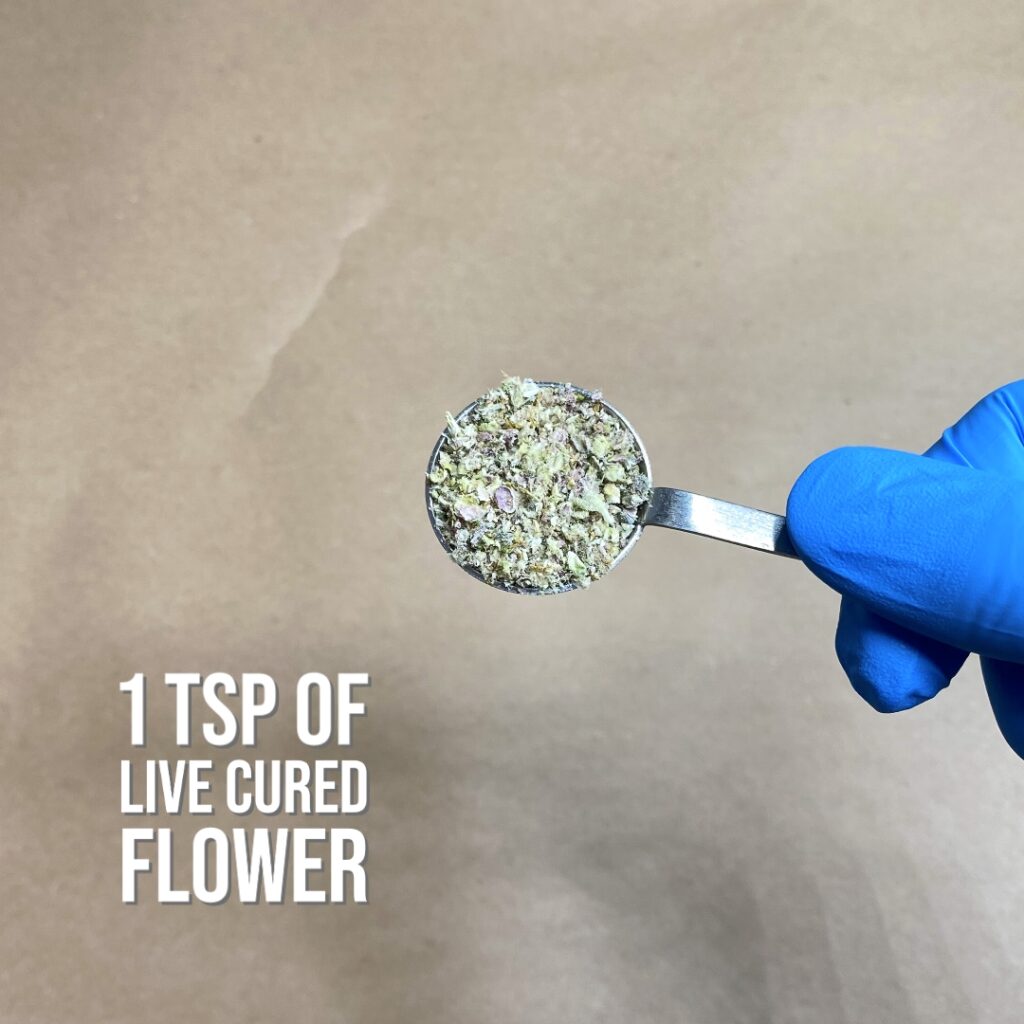

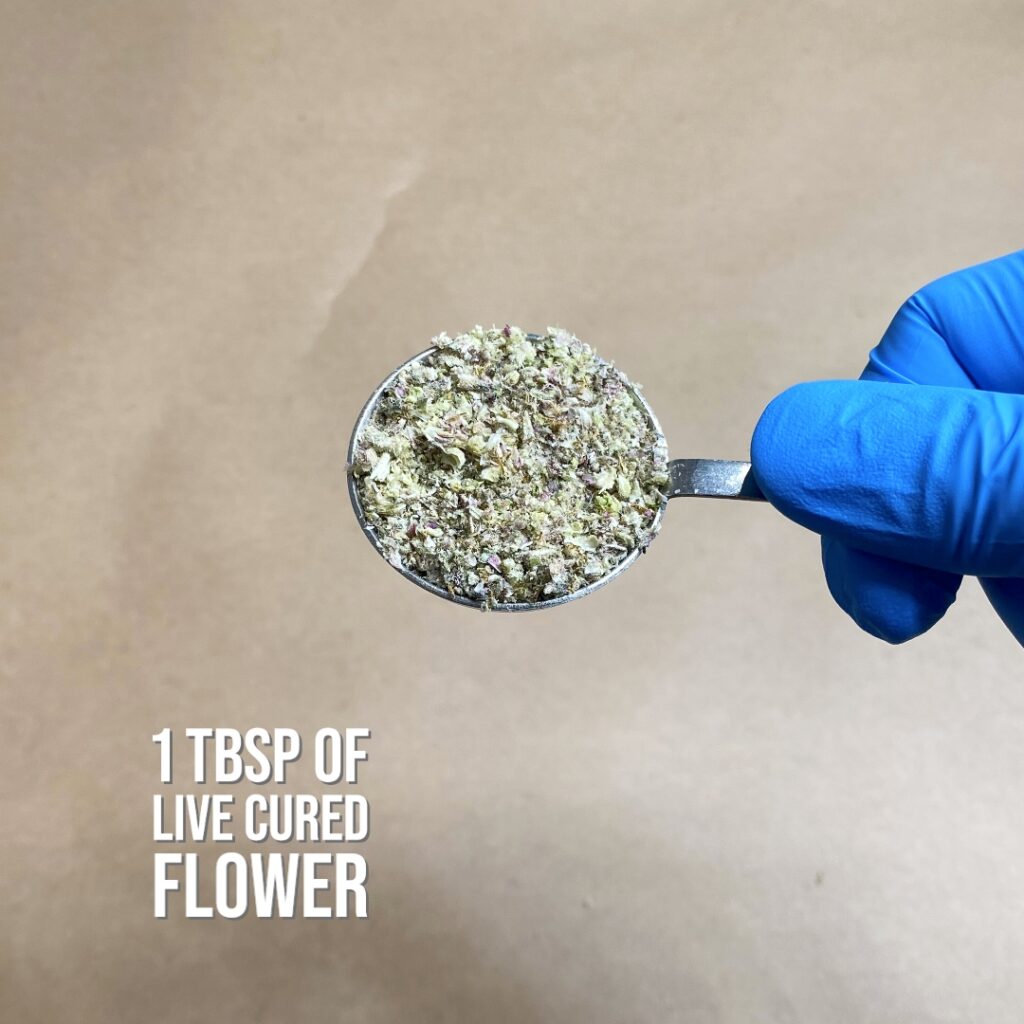
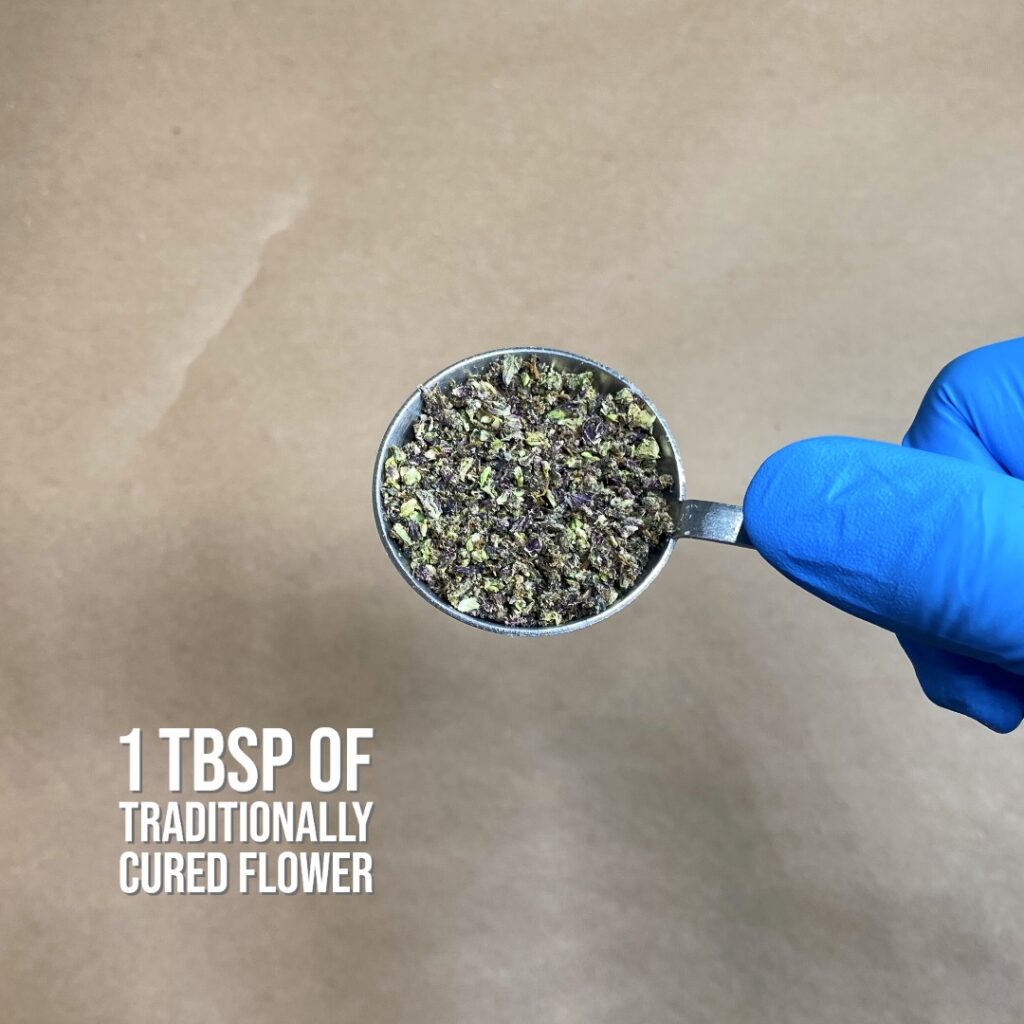
Obviously, there is more to twist up and enjoy with Live Cured Flower than traditionally cured flower. Think of a teaspoon as a bowl and a tablespoon as a small joint… Now let’s talk about the low dosing that I mentioned before:
- If we assume that each eighth is 30% THC, and each teaspoon serving of Live Cured Flower would is 0.35 grams then it would contain 106mg of THC.
- A teaspoon of traditionally cured flower would be 0.64 grams and contain 192mg THC.
- A tablespoon of Live Cured Flower would be 1.6 grams and contain 317mg of THC.
- A tablespoon of traditionally cured flower would be 1.92 grams and contain 575mg of THC.
The lower dose is a great feature for someone who is new to cannabis and just getting started. It’s also great for daytime use because you can easily meter out how much you’re consuming while still being able to enjoy a full bowl. If you pay close attention, you’ll see that Live Cure Flower provides more subtle effects, allowing you to focus on the potential therapeutic benefits while minimizing an overly intense psychoactive experience when not wanted.
I personally love smoking cannabis everyday, and I enjoy the low dose aspect. I also appreciate being able to have large smoke seshs off one eighth – The more cannabis I have to smoke the better. So, if one joint wasn’t enough, I always have more to roll another. Doesn’t seem like a bad trade to me!
If you haven’t already tried Live Cured Flower then take a look at our Retailer Map and find a store closest to you.
Stay safe and stay stoned!
